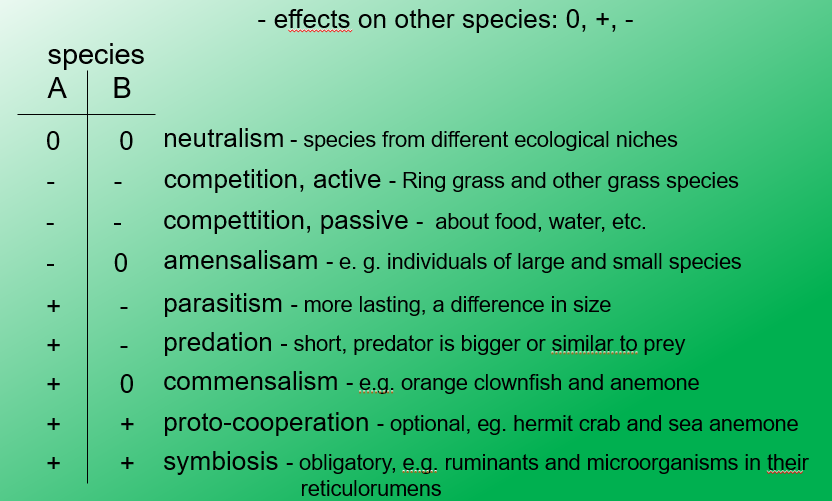3-Ecology Biotic factors
1/23
There's no tags or description
Looks like no tags are added yet.
Name | Mastery | Learn | Test | Matching | Spaced |
|---|
No study sessions yet.
24 Terms
What are the biotic factors ?
1. Abundance (numbers, density, biomass)
2. Spatial distribution (dominance, sociability, home range, territory)
3. Natality
4. Mortality
5. Biotic potential (species capacity)
6. Age structure
7. Population dynamics
8. Interactions (intraspecific and interspecific)
General abundance
average number of organisms at the unit of space
Ecological abundance
real number at the specific used space
Calculation of abundance
Absolute :
not feasible in practice
total count
count at test plots
Relative :
good to show trend
Index of abundance (0 to 5) :
by eye
by capturing success
by sightings (at specific site and time)
by tracks (transect)
Statistic analyses
Mark – recapture
Lincoln - Peterson index
Spatial distribution
dominance, sociability, home range
Dominance
as percentage compared to other species represented
dominant species, codominant, accompaning species
It depends on strategy of feeding, mating, care for offspring and socialization.
Sociability
distribution of the same species members. It depends on strategy of feeding, mating, care for offspring and socialization.
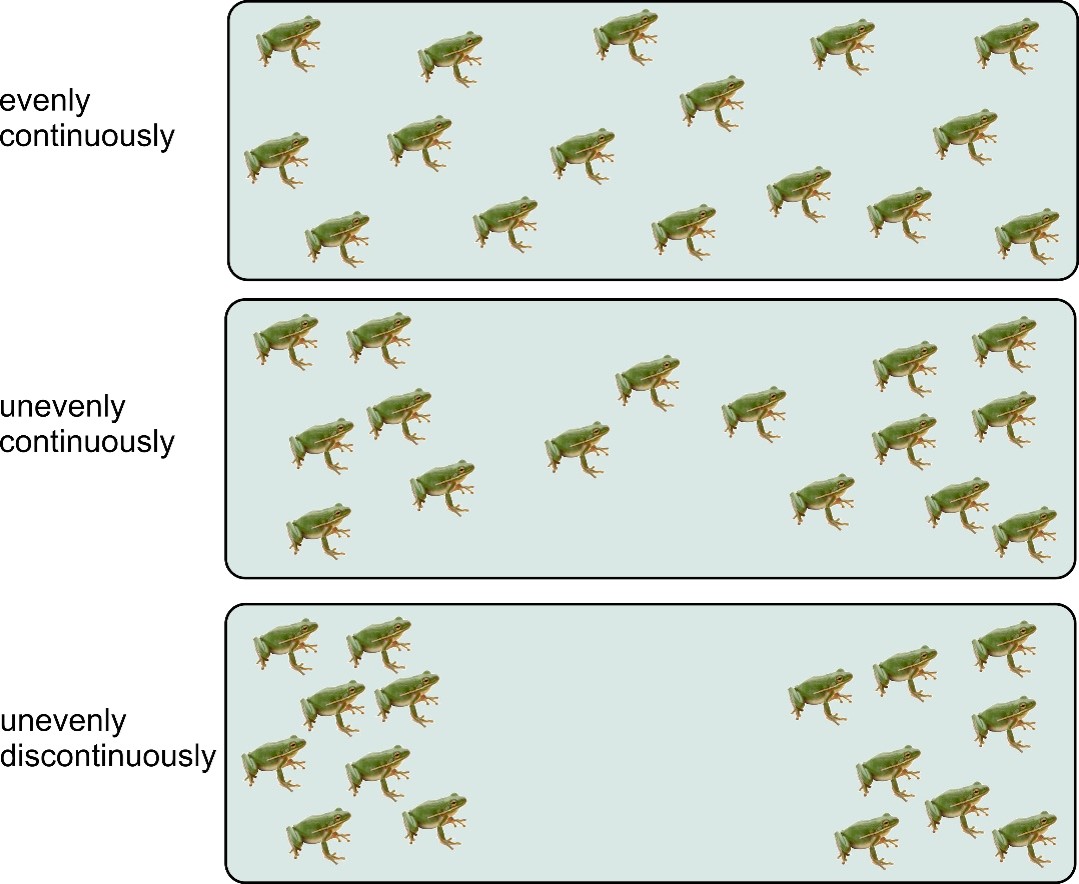
Home range
space in which one individual satisfies all life needs
size depends on species, season, time of the day…
Territoriality
when individul or a group actively defends its home range
prevents growth of population above habitat capacity
Migration
periodic :
summer/winter
day/night
non periodic
emigrations
imigrations
Both are due to changes in habitat (climate, food, abundance)
Natality
number of “new” individuals in the population in the unit of time
birth - hatching - division
positive factor of population growth (normally equivalent to mortality)
Two types of natality and their description
Maximal natality :
biological capacity
may occur only short term or in experiment
Ecological natality :
realised, limited by ecological conditions
Fecundity
women: 400 in lifetime - internal fertilization
oyster: 60 000 000 in season - external fertilization
termite (queen): 100 000 000 in lifetime - internal fertilization (only one is fertile)
tapeworm Taenia sp.: 14 000 per day - internal fertilization (life cycle)
Fertility
possible number of descendants - elephant 5 to 6 in lifetime
Mortality
number of dead (death rate) in population in the unit of time
negative factor of poplation growth (normally equivalent to natality)
Types of mortality and their description
Physiological mortality - minimal, in optimal conditions, theoreticaly
Ecological mortality - realised, determined by external factors
Survival rate
length of life, how many survive from period to period
Mortality over life phases

Biotic potential of the species
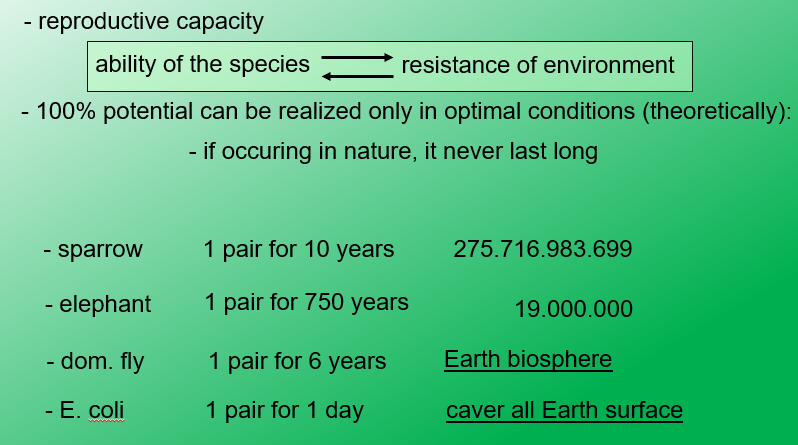
Age structure
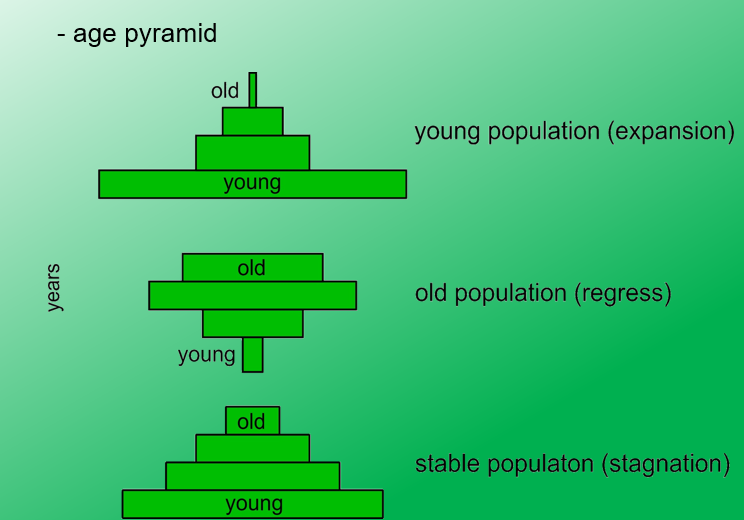
Population dynamic (important graph)
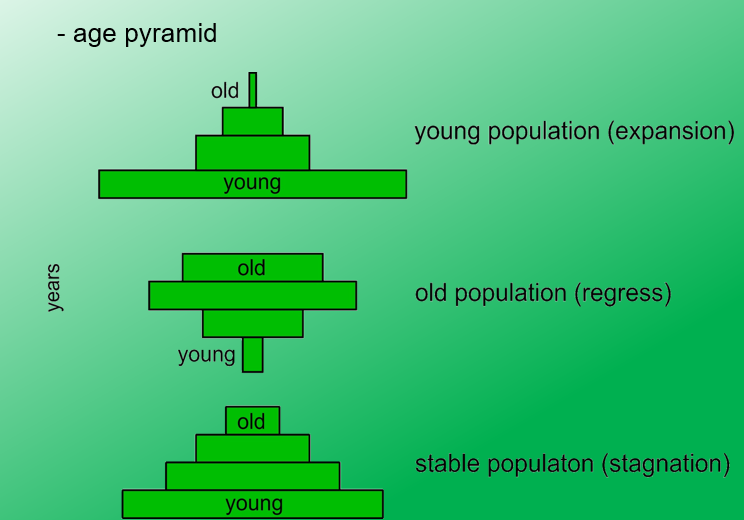
Factors causing population fluctuactions
PHYSICAL (independent of density) :
temperature (ice - fire), moisture (drought-flood), climate
dominate in more simple ecosystems - tundra, monocultures
fluctuations are stronger and with lasting consequences
BIOLOGICAL (density dependent) :
influence is directly proportionally growing
FEED BACK REACTION (organisms can modify their environment and these modifications can feed back to the organism, generating emergent properties with evolutionary consequences - ex with the prey and the predator, preys are eaten by the ptredators so less preys what leads to less predators)
dominate in more diverse ecosystems - tropical rain forest
Selfregulation - tendency of all populations
Hyperpopulation - not in interest of any population
What are the types of interactions and their description ?
INTRASPECIFIC competition : growth of population of one species pushes it toward marginal habitat
INTERSPECIFIC competition : growth of population of competing species pushes it into the optimal zone of available habitat

Interspecific interactions and effects on other species 0, +, -
